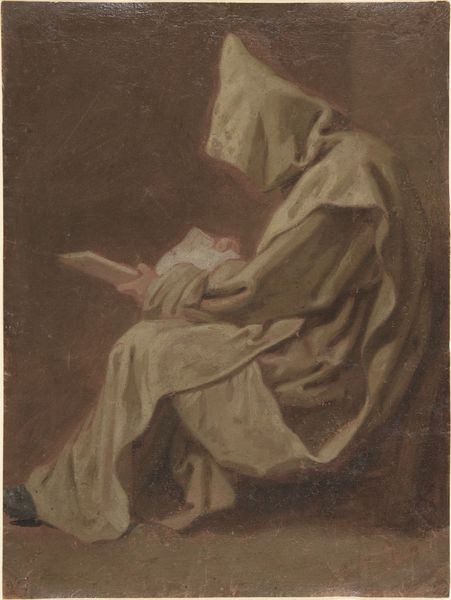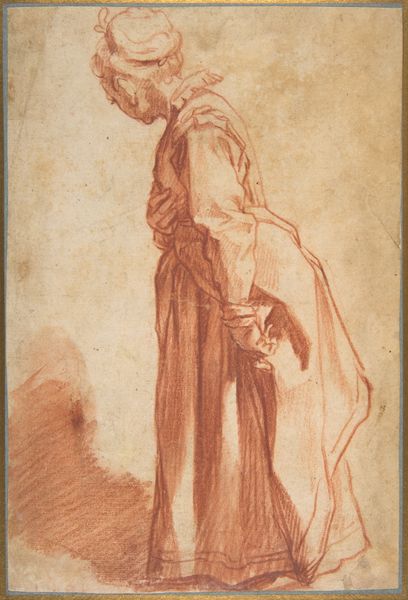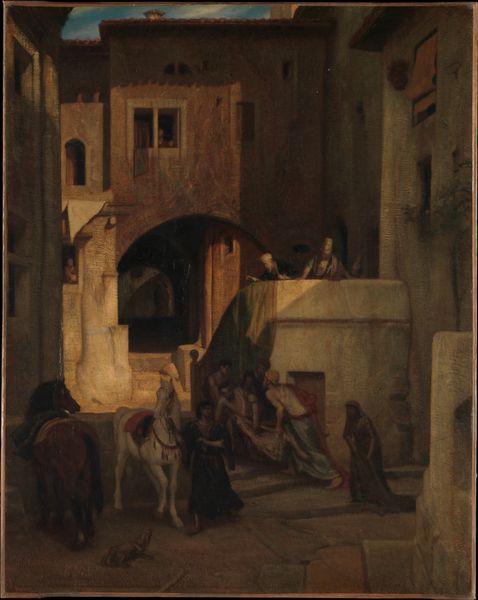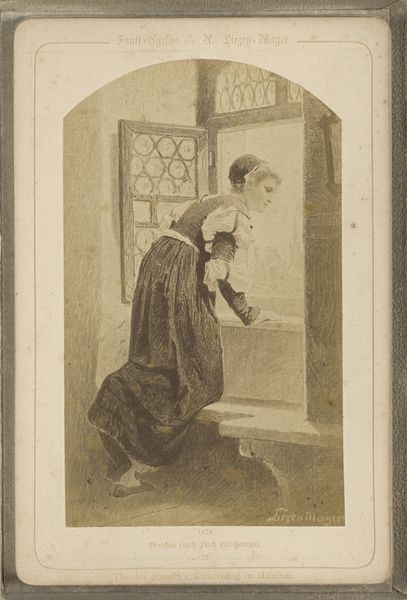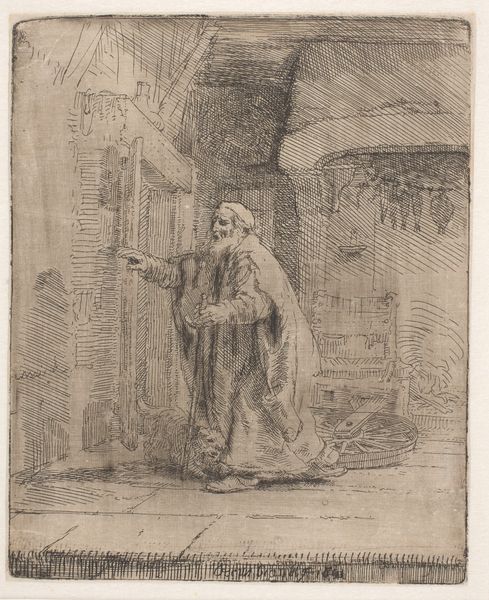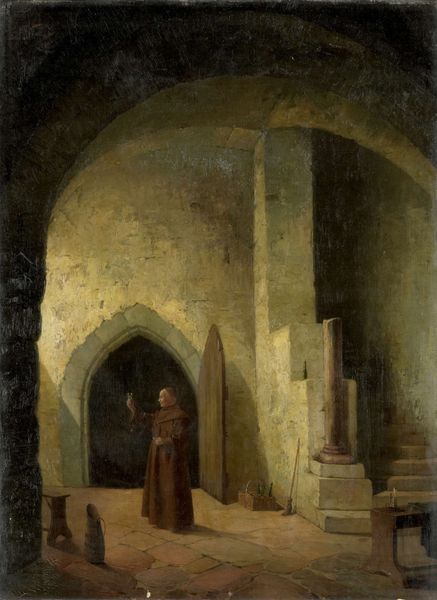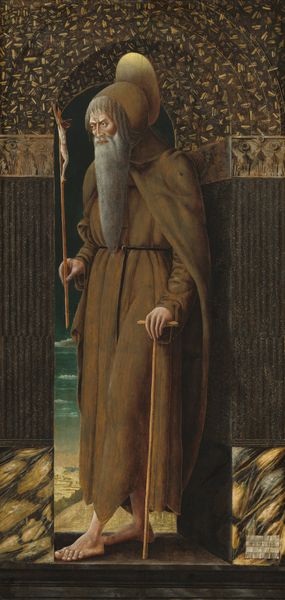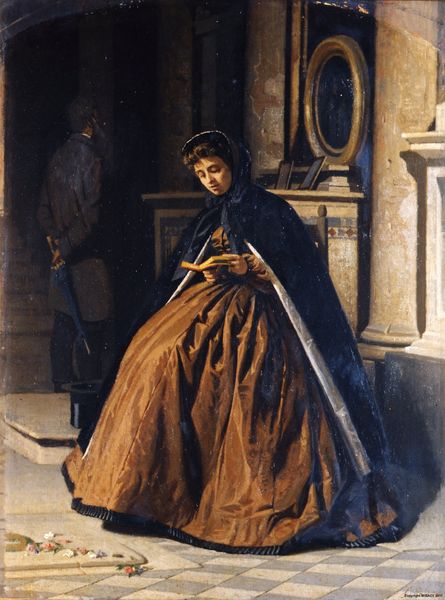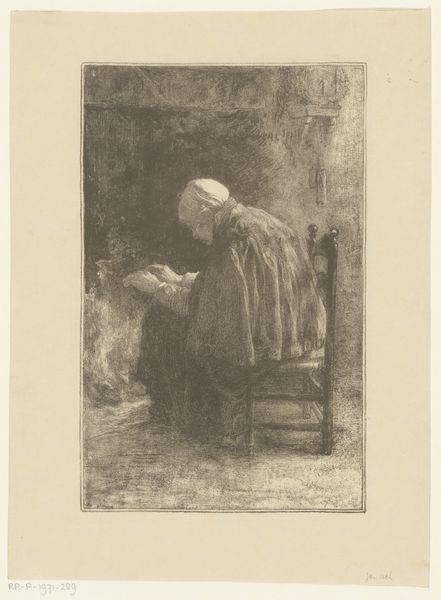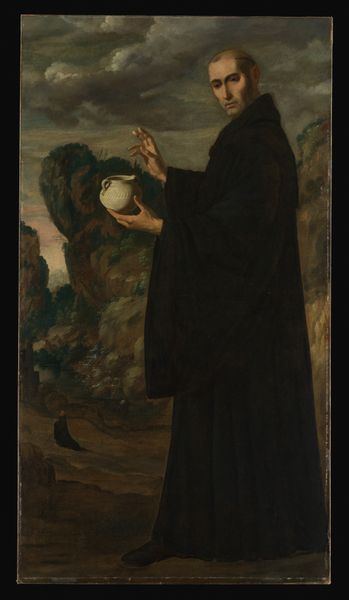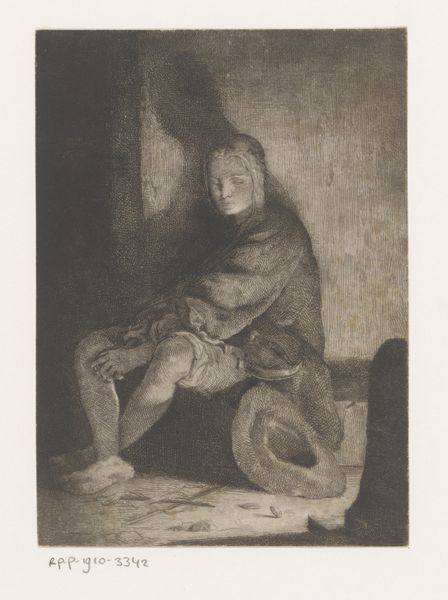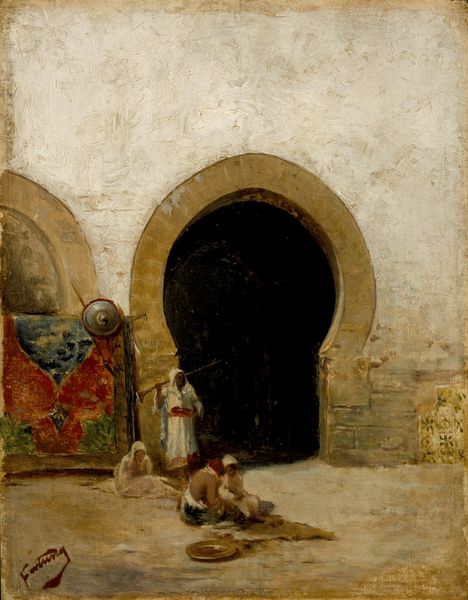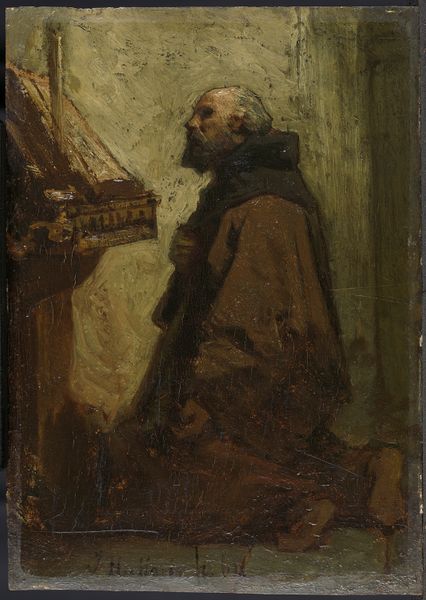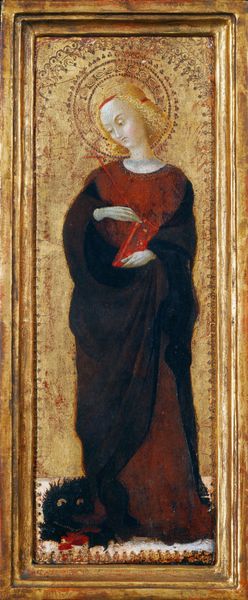
painting, oil-paint
#
narrative-art
#
painting
#
oil-paint
#
figuration
#
oil painting
#
history-painting
#
academic-art
#
realism
Copyright: Public domain
Curator: Jean-André Rixens, a French artist known for his historical and genre paintings, is believed to be the creator of this oil painting titled *Le Repentir de Saint Pierre*. Editor: It's strikingly melancholic. The dark palette, the hunched figure—it all evokes a deep sense of sorrow. Curator: Absolutely. Look at the staging: Peter is presented outside, almost in the shadows. The architectural details loom, highlighting his isolation after denying Christ. We must consider the historical context: The French Third Republic, its crisis of identity and anxieties that perhaps explains why themes like guilt were prominent. Editor: But what of the artistic choices here? The dramatic lighting accentuates the figure, turning him almost sculptural. The rough brushwork adds to the raw emotion. I notice, too, the careful arrangement of drapery. Observe the cascading folds of his robe; they are like rivulets of grief. Curator: Precisely, drapery often served a symbolic function, adding an important element to its reading by educated contemporary audiences. But let's consider the means of production. Rixens trained at the École des Beaux-Arts. His style reflects the academic system, yet his realistic approach suggests an investment in the emerging positivist spirit, one emphasizing observation over idealization. Editor: That's fair. The realism grounds the spiritual anguish. It makes it more tangible, more human. Even the bare feet contribute to this earthiness. I would not downplay, however, the ethereal glow of the halo; it is an interesting compositional choice, as it frames Peter, yet provides a point of light from above to offset the rather dim palette of earth tones. Curator: It reflects a market for such religious paintings but also offers an understanding of late nineteenth-century values and aesthetics. The art market would not remain beholden to the academic style. Editor: No, certainly not. What stands out for me, finally, is the intense vulnerability captured in Peter's posture, in the visual weight given to his downturned head and clasped hands. The artist, like many, sought to find form for the deepest experiences in art. Curator: A form, shaped by the very material conditions that underpinned its creation and reception. Food for thought, indeed.
Comments
No comments
Be the first to comment and join the conversation on the ultimate creative platform.
